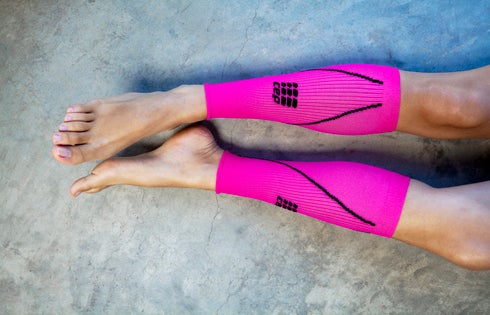5 Techniques For Recovery From Triathlons

Photo: Scott Draper
When it comes to recovery, timing is critical. Here’s a sampling of some of the best techniques and the ideal time to use them.
Compression
A recent Australian study found that athletes can improve their performance in 30 minutes of high-intensity cycling by wearing compression clothing. Choose graduated gear (highest pressure at the ankle), avoid cheap material (nylon and elastane), always air dry and avoid “medical-grade,” as it may actually inhibit blood flow.
Time it right: Timing is not fully understood, although general guidelines include always on flights and long car rides, immediately after hard efforts and when sitting (desk job) or standing (on-feet job) for extended periods of time.
RELATED: Andy Potts’ Five Rules Of Recovery
Ice Bath
Used since the triathalosarus days, cold-water immersion is cheap and can reduce immediate soreness. All you need is a tub and ice or a cold river/lake and a thermometer (approximately 55 degrees F).
Time it right: It may be ideal to use compression immediately after exercise and then ice three hours after exercise for 10–15 minutes to allow normal protein synthesis to occur. It’s possible that even though ice may reduce immediate muscle pain/soreness, it may inhibit overall recovery if used too early after effort.
RELATED VIDEO: Quantifying Your Recovery
Massage
A foam roller, ball, PVC pipe, etc., can bring legs back to homeostasis. If you address adhesions or knots in the soft tissue on a regular basis, it can be extremely beneficial as both a recovery tool and an injury-prevention technique.
Time it right: The best time for a massage is three hours or longer after a race or hard effort. A 2009 study in the British Journal of Sports Medicine concluded that massage immediately after intense effort inhibited the body’s ability to remove lactate from muscle.
RELATED VIDEO: The Benefits Of Massage
Active Recovery
An easy spin on the bike or short, low-intensity run.
Time it right: Research suggests that active recovery can “flush” the body and legs in the early and immediate phase and, along with compression, should be considered as an immediate recovery technique.
Rest
There is no substitute for recovery days and good sleep.
Time it right: Resting when your body needs it and creating low-stress environments will always be an ongoing top priority. Using a coach and understanding key metrics of body response to training (such as heart rate recovery) need to be coupled with recovery methods based on science, with careful attention to timing.
RELATED VIDEO: Breath Exercises
Follow Triathlete on Twitter @Triathletemag for inspiration, new workout ideas, gear reviews from our editors and more.